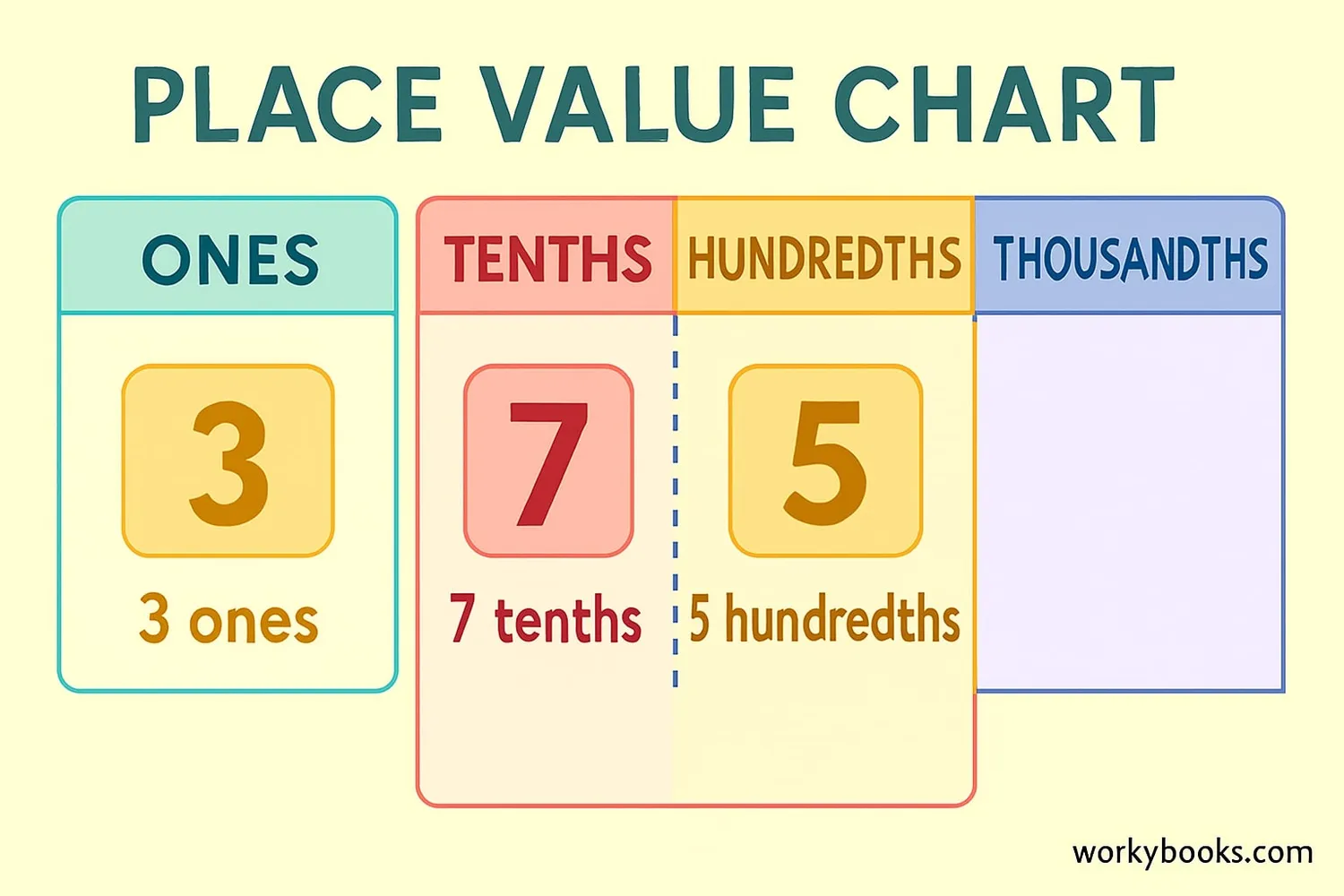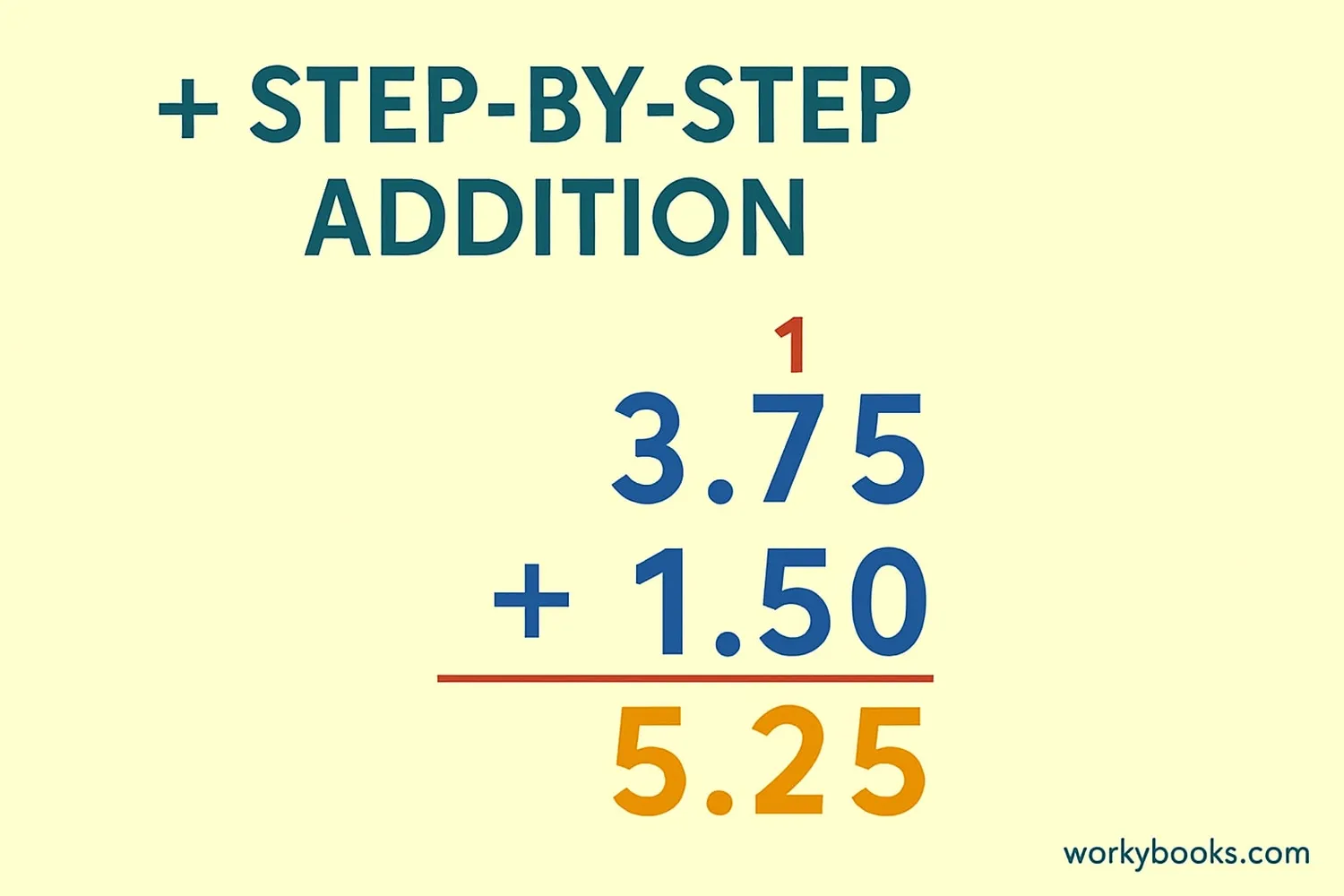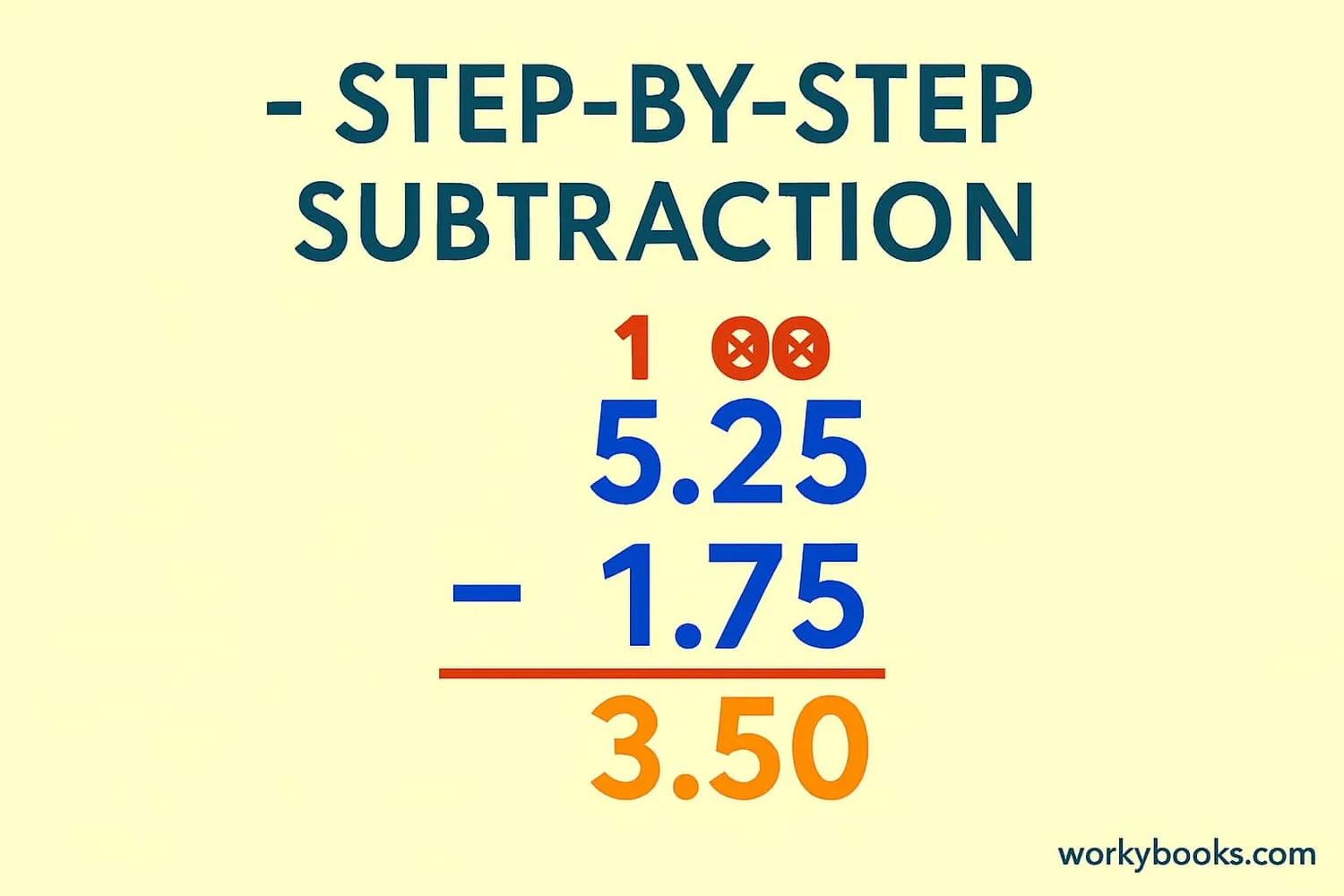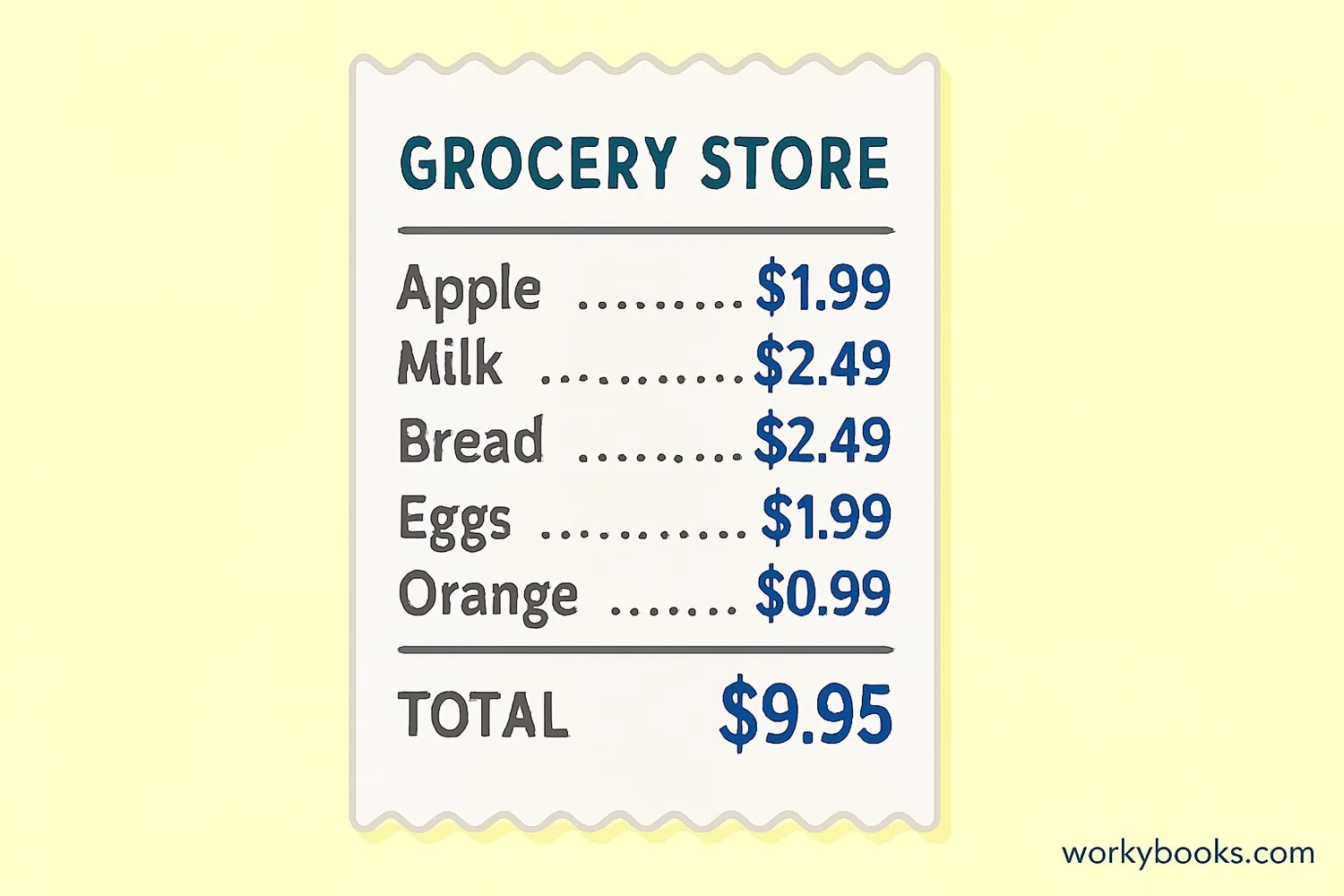Adding Decimals - Definition, Examples, Quiz, FAQ, Trivia
Learn to work with decimal numbers through step-by-step explanations, visual examples, and practice activities
What are Decimals?

Decimals are numbers that have a whole number part and a fractional part separated by a decimal point. The digits after the decimal point represent parts of a whole number. For example:
3.75 means 3 whole units and 75 hundredths of another unit.
The decimal places are:
- Tenths (1/10) - first digit after decimal
- Hundredths (1/100) - second digit after decimal
- Thousandths (1/1000) - third digit after decimal
Decimals are used everywhere in our daily lives - money ($3.75), measurements (1.5 meters), and even sports statistics (a 0.325 batting average).
Key Concept
When adding or subtracting decimals, the most important rule is to line up the decimal points. This ensures you're adding tenths to tenths, hundredths to hundredths, and so on.
How to Add Decimals

Adding decimals is similar to adding whole numbers, but with one important extra step - aligning the decimal points. Here's how to do it:
Example: Add 3.75 + 1.5
Notice how we added a zero to 1.5 to make it 1.50? This helps us add hundredths to hundredths.
How to Subtract Decimals

Subtracting decimals follows similar rules to addition. The key is aligning decimal points and adding placeholder zeros when needed. Here's the process:
Example: Subtract 5.25 - 1.75
Notice how we borrowed 1 from the tenths column to make 15 hundredths minus 5 hundredths.
Real-World Examples

Let's practice with some real-world examples of adding and subtracting decimals:
Example 1: Money
Sarah has $15.75. She earns $12.50 for helping her neighbor. How much money does she have now?
Solution: $15.75 + $12.50 = $28.25
Example 2: Measurements
A piece of wood is 2.75 meters long. If you cut off 0.5 meters, how long is the remaining piece?
Solution: 2.75 - 0.50 = 2.25 meters
Example 3: Cooking
A recipe calls for 0.75 cups of sugar and 0.25 cups of brown sugar. How much total sugar is needed?
Solution: 0.75 + 0.25 = 1.00 cup
Example 4: Sports
In a race, Mia ran 100 meters in 12.75 seconds. Her friend ran it in 13.25 seconds. What's the difference in their times?
Solution: 13.25 - 12.75 = 0.50 seconds
Practice Tip
Look for decimals in your everyday life - prices, measurements, cooking recipes, and sports statistics. Practice adding and subtracting them!
Decimal Operations Quiz
Test your decimal addition and subtraction skills with this 5-question quiz. Choose the correct answer for each question.
Frequently Asked Questions
Here are answers to common questions about decimal operations:
Decimal Trivia
Discover interesting facts about decimals and their history:
Decimal History
The decimal system was developed by Persian mathematician Al-Kashi in the 15th century. Before decimals, fractions were the main way to represent parts of a whole.
Decimal Point Variations
While most countries use a period (.) as a decimal point, many European countries use a comma (,) instead. For example, 3.75 in the US is written as 3,75 in Germany.
Decimals in Space
NASA scientists use decimals to measure incredibly precise distances. The Mars Rover landing required calculations accurate to within 0.0001 degrees of angle!
Pi Calculation Record
The world record for calculating the most decimal digits of pi is 100 trillion digits! It took a supercomputer 157 days to calculate this incredibly long decimal.





